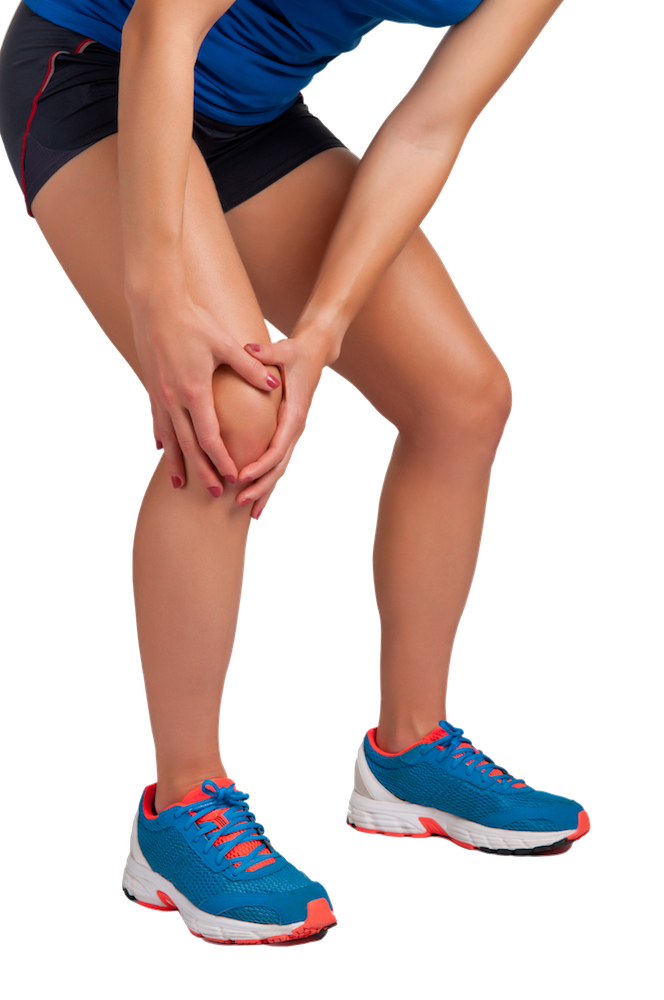Patellofemoral pain syndrome
Patellofemoral pain syndrome (PFPS) is a likely cause for pain experienced at the front of the knee. It is commonly seen in the general population, particularly affecting young active adults and runners. Women are more likely to develop the condition due to differences in bone structure and muscular strength.
What do you feel?
People with PFPS feel a gradual, aching pain in the front of the knee, particularly under and around the kneecap. The pain mostly occurs when the knee is loaded, for example whilst climbing stairs, walking up and down hills, squatting, or running. Some also feel it after sitting for long periods with bent knees, which can be extremely annoying at work or at the movies! Occasionally, you may also hear a clicking or grinding sound when bending and straightening your knee.
Why does it happen?
The kneecap is known as your patella. Under normal circumstances, the patella glides smoothly up and down a groove in the lower part of the thigh bone as you bend and straighten your leg. PFPS occurs when the kneecap “mistracks” and doesn’t glide normally through the groove. This can cause the patella to rub on the bone underneath, causing irritation and pain. A combination of factors are often involved. The most common ones are:
- Muscle imbalances of the lower limb
- Your thigh muscles (quadriceps) attach to the patella and pull it upwards as you straighten your knee. The outside part of the quadriceps (vastus lateralis) tends to be much stronger compared to the inside portion (vastus medialis oblique – VMO). A lot of people also have trouble getting the VMOs working during daily activities. This causes the kneecap to be pulled outwards. Other muscles, such as our core stabilisers, gluteals, hip muscles, and calves are equally as important. Weakness or inadequate activation of these muscles all contribute to increased strain on the kneecap joint.
- Poor biomechanical alignment
- Biomechanics is important. Check for yourself! Balance on one leg and perform a single-leg squat. Does your knee collapse inwards? If so, you may have weak hip muscles and, thus, be at an increased risk of developing PFPS. Having flat feet or inwardly-turning thigh bones are also factors that increase the load through the kneecap joint. This is commonly seen in women, which is why they are more likely to develop this condition.
Now what?
PFPS can be an annoying injury if not treated properly! Physiotherapists are trained to assess your movement and muscle activation patterns to determine the contributing factors for your pain. Your physiotherapist will work with you to address specific issues and guide you through a personalized rehabilitation program. Treatment may include:
- Taping
- Assessing your walking and running patterns
- Soft tissue work of common tight areas such as the vastus ateralis & iliotibial band
- Stretching exercises to help improve the flexibility of your lower limb muscles
- Strengthening exercises to offload the kneecap joint
- Education and advice for self-management and prevention of other injuries
- Developing a loading program specific to your needs and activities
If you are experiencing these symptoms or have any concerns, feel free to come in and make an appointment.
– Anne Keng

